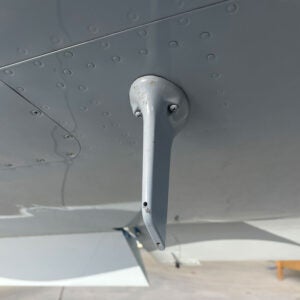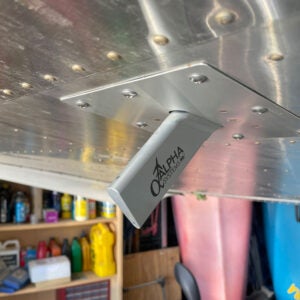As part of an EAA Safety committee promoting the use of angle of attack flying, I fly a lot of different AoA systems. In fact, I have probably flown pretty much every system on the market today, as well as some that are no longer available, and some that are not yet available. Among our household’s six aircraft, we have 10 separate systems installed, with two more on the workbench awaiting some shop time to get them flying. It’s interesting to have multiple AoA systems in the same airframe for comparison—not only in terms of accuracy, but to evaluate user interfaces as well.
This week’s project was to add AoA to our RV-3’s Garmin G3X Touch system. This involved adding a new GSU 25 ADAHRS (the original system had a non-AOA-capable GSU 73, which we kept for ADAHRS redundancy) and necessary plumbing for the AoA pressure data. The airplane already had an Advanced Flight Systems AoA Pro installed, a system that uses pitot, static and upper/lower wing ports. The Garmin uses static, pitot and an AoA pitot signal, so we couldn’t use the wing ports from the AFS system.

This airplane has always had a blade pitot tube from a Piper as its pitot source—static is provided by the standard Van’s static ports on the side of the fuselage. Changing to a Garmin pitot tube was going to require some surgery that I was not looking forward to performing and, anyway, I like the look of the blade pitot. I considered using a pop-rivet AoA port as can be installed on the RV-12, but looking at how to install it in the thin, tiny wing of the finished RV-3, I realized it was going to be a problem, so I looked again at the Piper blade. That pitot also has a static port, a tiny hole on the back of the blade—which is totally inaccurate on an RV—and underneath it, on the sloped portion of the blade, is a drain port for that static hole. Looking at it, I realized that it was essentially an angled port, much like you’d see on other AoA pitot tubes.

Looking over at our Tundra, equipped with an Alpha Systems Eagle Pro system, the AoA mast has a very similar geometry to the Piper blade, so I figured what have I got to lose to try out the Piper port? Plumbing it up didn’t take long and, after that, it is all in the calibration—you are basically comparing the pressures from two different angled ports to determine AoA. Oh, remember that you have to seal up the actual static port on the back of the blade with a piece of tape! After buttoning things up, I took to the air and did a calibration run per Garmin’s instructions and voilà—it matched the existing AFS Pro AoA performance exactly!
Standard disclaimers apply: Garmin only attests to its systems performance if you use their pitot tube. Your geometry may vary. Piper made several versions of this blade pitot and they aren’t all shaped the same. I have no idea of the part number of this one (which came from a salvage yard). Your mileage may vary! This was an experiment that could have easily failed, and I was prepared to install a regular AoA pitot tube if this didn’t work. But in the interest of Experimental aviation, I can tell you that in this sample size of one it seems to work very well.













